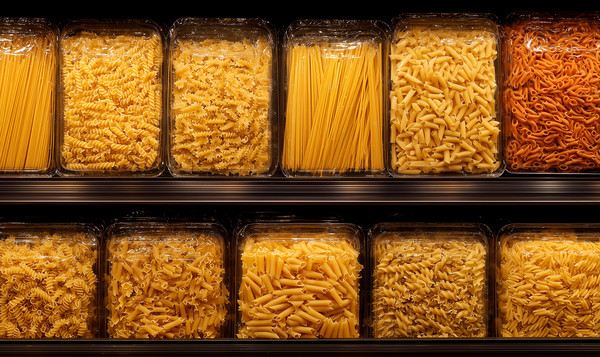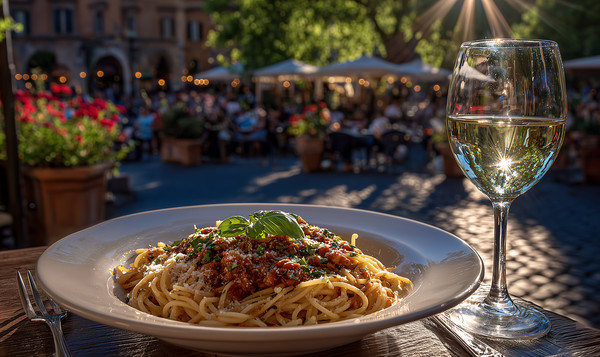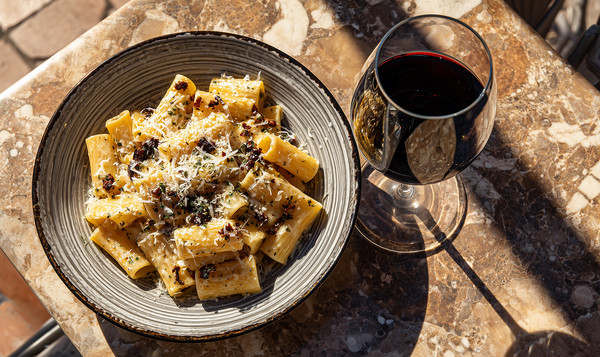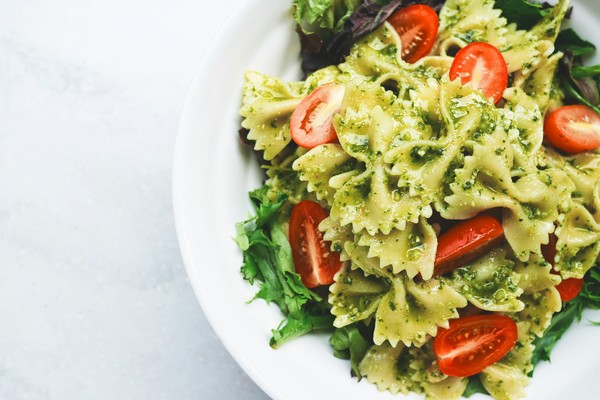Italian Pasta: One of the Country’s Best Culinary Symbols

[아츠앤컬쳐] “Butta la pasta, amore.”(파스타를 넣어 줘, 자기야.)
이탈리아 사람들이 점심이나 저녁을 먹기 위해 집에 도착할 즈음 흔히 하는 말이다. 이것은 어머니나 배우자에게 몇 분 안에 도착하니 파스타를 만들어 달라고 부탁하는 것이다.
이탈리아 파스타는 기분 좋은 행복의 순간과 연결된다. 단지 맛있는 음식이기 때문만이 아니라, 우리의 몸과 마음을 달래주는 ‘약’과도 같아서 긍정적인 감정을 불러일으킨다. 파스타는 이탈리아 요리의 핵심 요소로, 수많은 모양의 파스타가 존재하며 이들은 라구 볼로네제처럼 오래 조리해야 하는 소스부터 버터와 파르미지아노 레지아노 치즈 같은 간단한 재료와도 잘 어울린다.
잘 알려진 스파게티, 펜네, 푸실리, 탈리아텔레 외에도 이탈리아에는 다양한 모양과 용도의 파스타가 존재한다. www.italia.it에 따르면, 이탈리아에는 공식적으로 300가지 이상의 파스타 종류가 있다. 풀리아 지역의 스트라쉬나티, 리구리아의 카펠리니와 피델리니, 토스카나의 피치와 파파르델레, 캄파니아의 베르미첼리와 리가토니, 라치오의 부카티니, 시칠리아의 마카루나처럼 각 지역마다 고유의 파스타가 있다. 이탈리아는 세계 최대의 파스타 생산국이자 수출국이다.

파스타는 건면과 생면으로 나뉘는데, 건면은 듀럼 밀 세몰리나와 물, 소금으로 만들고, 생면은 보통 달걀과 부드러운 밀가루를 사용한다. 파스타는 짧은 형태와 긴 형태로도 분류되며, 그 모양과 크기에 따라 다양하게 나뉜다. 파스타 요리를 더욱 풍성하게 해주는 형태로는 속을 채운 파스타가 있다. 예를 들어, 치즈와 시금치로 속을 채우고 버터와 세이지 소스를 곁들이는 라비올리, 감자와 허브를 넣고 멧돼지 소스인 라구 디 칭기알레와 잘 어울리는 토르텔리 디 무젤로가 있다. 수프용으로는 아주 작은 형태의 파스티나가 자주 쓰인다.
파스타와 소스를 적절히 사용하면 균형 잡히고 조화로운 요리가 완성된다. 예를 들어, 스파게티보다 넓고 납작한 페투치네는 라구 볼로네제와 잘 어울리며, 가는 면인 베르미첼리는 토마토소스나 올리브오일·고추·참치와 함께 사용한다. 소스를 잘 흡수하고 섞이게 해 주는 귀 모양의 오레키에테는 브로콜리와 소시지와, 나선형 푸실리는 볶은 애호박이나 리코타 치즈, 파르미지아노 치즈와 좋은 조화를 이룬다.

완벽한 파스타 요리를 위해서는 주의와 열정이 필요하다. 알맞은 파스타 종류와 소스를 고르는 것은 물론, 적절한 양의 끓는 물과 굵은 소금을 사용하는 것, 준비된 면과 소스 둘 다 중간 정도 온도일 때 팬에서 잘 버무려야 맛이 제대로 난다. 마지막으로 올리브오일을 한 방울 더하거나, 페코리노 로마노 치즈를 갈아 넣어 마무리한다. 이탈리아 파스타는 대개 알덴테(al dente)로 삶는데, 이는 “씹을 만큼 충분히 단단”하여 소스를 더 잘 흡수할 수 있는 이상적인 식감을 갖게 함을 의미한다.
“La pasta si mangia con il cuore.”(파스타는 마음으로 먹는 것이다) 이탈리아 속담은 파스타를 먹는 즐거움과 만족을 무엇보다 중요시한다. Buon appetito!

Italian Pasta: One of the Country’s Best Culinary Symbols
"Butta la pasta, amore." ("throw the pasta [into the hot water], darling.") is a phrase commonly heard from an Italian man or woman as they approach their home for lunch or dinner. This expression signals to their mother or spouse that they will be home in a few minutes and ready to enjoy the pasta dish prepared by their loved one.
Italian pasta is often associated with a moment of happiness; it creates a good positive emotion, not only because it is a delicious food, but also as a “medicine” to comfort our bodies. Pasta is a fundamental element of Italian cuisine, with many varieties of pasta shapes that can be combined with a wide range of sauces, such as ragù Bolognese, which requires a quite lengthy cooking process, or with simple ingredients like butter and Parmigiano Reggiano cheese.
In addition to the well-known pasta varieties, namely Spaghetti, Penne, Fusilli, and Tagliatelle, there are many other shapes and types of pasta, each with its own characteristics and uses. According to https://www.italia.it, Italy is home to more than 300 recognised pasta shapes. Each region has their own pasta specialities, such as Strascinati from Puglia, Capellini and Fidelini from Liguria, Pici and Pappardelle from Tuscany, Vermicelli and Rigatoni from Campania, Bucatini from Lazio, and Maccarruna from Sicily. Italy is the world’s largest pasta producer and exporter.

Pasta can be categorised into dry pasta (pasta secca), which is made from durum wheat semolina, water, plus a bit of salt, and fresh pasta (pasta fresca) is usually made with eggs and softer wheat flour. The diversity and choice of pasta shapes, whether short pasta (pasta corta) or long pasta (pasta lunga), refer to the physical shape and size of the pasta. More varieties that enrich this il primo piatto (the first dish) are filled pasta (pasta ripiena), like Ravioli: square pasta often stuffed with cheese and spinach, usually combined with butter and sage sauce. Tortelli di Mugello: a round or square-shaped pasta filled with potatoes and herbs, perfectly accompanied by ragù di cinghiale (wild boar sauce). Small pasta shapes (pastina), usually mixed in pasta soup dishes.
The pairing of pasta shapes with the right sauces ensures a balanced and harmonious dish. For example, pasta Fettuccine, similar to spaghetti but wider and flatter, is often used with ragù alla Bolognese. Vermicelli, a long, thin pasta, is usually used with simple tomato sauce or with olive oil, chilli and tuna. Orecchiette is good to use for broccoli and sausages, as the ear shape will help to “pick up” and blend with the sauce better. Fusilli, a spiral pasta shape, is excellent for holding sautéed zucchini or blending ricotta cheese with parmesan.

Cooking a perfect pasta dish requires attention and passion. It is essential not only to choose the right pasta shape and sauce, but also to use the right amount of boiling water and coarse salt when cooking the pasta, and the mixing process to bind the pasta’s texture to the well-prepared sauce, e.g. both the pasta and the cooked sauce should be at a medium temperature when combined in the pan. The final touch is to add a drizzle of olive oil or some grated Pecorino Romano cheese into the mixture. Italian pasta is often cooked al dente, meaning "to the tooth," which means that the pasta is “adequately firm to bite”, resulting in a texture that allows it to absorb the sauce better.
"La pasta si mangia con il cuore", “pasta is eaten with the heart”, a popular proverb expresses an idea of emphasising the importance of pleasure and enjoyment when eating pasta. Buon appetito!

글 ㅣ Maureen Siwy
Culinary and social traditions researcher

